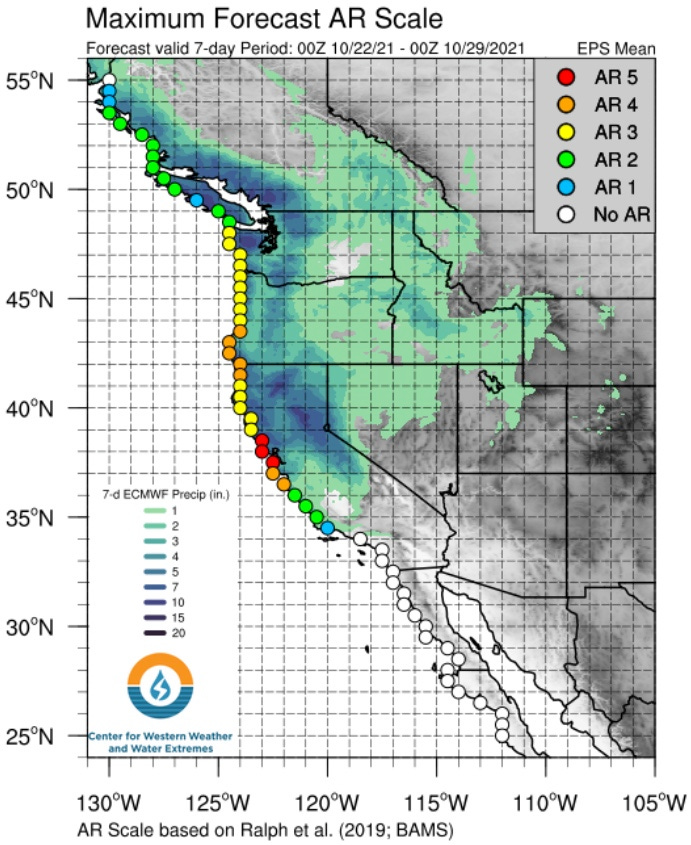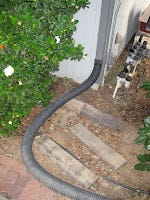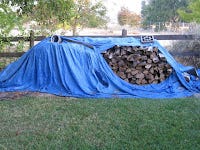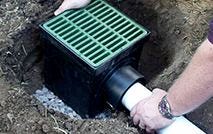Bonus Garden Basics Newsletter for West Coasters: What to Do in the Yard Before the Big Storm Hits.
You may have seen the news: a bombogenesis, a “bomb cyclone”, is headed for the West Coast this weekend, from late Saturday (10/23/21) to early Tuesday (10/26/21). Winds in British Columbia and upper Washington state are predicted to approach 40 miles an hour…or more. Up to a foot of rain may fall, in a rather short period of time. In the West, we are welcoming the rain…but damage may ensue, especially in forested areas recently burned. Noted West Coast meteorologist Daniel Swain says the atmospheric river headed our way will be strongest in the SF Bay Area. For homeowners, here are some tips to prepare for this event:
Get Ready for the First Big Storm of Autumn!
A checklist:
• Secure, cover or remove patio furniture, bbq.
• Remove pads and umbrellas.
• Add compost to the top of a garden bed. Let the rains move it downward.
• Got fallen leaves? Chop them up and top your garden bed with them to help break up the force of a heavy rain pummeling your soil.
• Move plant starts, container plants to a safe area.
• Add gutter extensions.
• To fertilize or not fertilize the lawn before a predicted rainstorm? Pros: fertilizer will be worked into the soil effortlessly. Cons: heavy rain could wash fertilizer off a lawn, especially if it is sloped, into the gutter. Synthetic chemicals in lawn fertilizers can damage creek life. Using organic fertilizer is one possible solution. Still, runoff from that can cause problems, as well. Do you feel lucky?
• Remove diseased, dying plants and fallen fruit. Rainfall can spread harmful fungal diseases.
• Low spots? Mark those overly wet areas with a stick and take action after the storm (see below for more).
• Turn off the automatic sprinklers. Reset after the storm or just water manually, as needed, between storms.
• Protect new plants in the ground with row covers. Heavy rain could uproot seedlings. Row covers will disperse that action.
• Move tools indoors. Cover or move lawn mowers, tillers, etc.
• Turn over buckets, pots, etc. to keep mosquitoes from breeding.
• Do you use a sump pump during the winter to move water from unwanted areas, such as pool covers? Make sure it is working!
• The first storm of the season means downed tree limbs.
• Does your generator work?
• Harvest heavy fruit (apples!) to keep branches from breaking. Pray for your unripe persimmons.
• Cover or move any harvested crops.
• Harvest whatever might rot from too much water, such as walnuts or popcorn.
• Do you have a covered area to feed outdoor pets?
• Do you have a shelter for your outdoor pets?
• Clean spa and pool filters. The first batch of storm-driven leaves are on the way!
• Cover the pool and spa to keep debris out.
• Secure the spa cover. They will blow open!
• The combination of leaf-heavy trees and storms means a high possibility of large branches falling. Move your valuables out of harm's way, including your vehicles.
• Replace torn tarps on firewood.
• Clean roof gutters before the storm.
For Overly Wet Areas After the Storm (and after the soil has dried a bit):
* Dig a sump. A hole that is dug in the lowest portion of your yard, a hole that penetrates through all the layers of hardpan (usually 2-4 feet below the surface), can help drain away stormwater. Line the hole with a non-porous material (hard plastic sheeting, for example) to keep the surrounding dirt from falling back into the hole. Fill the hole with small rocks, about one inch in diameter.
* If it's the lawn area that's flooding, dig a trench and lay a drain line in the lowest area of the lawn. Don't do any digging immediately after a heavy rain, though; wait until the soil dries enough to avoid unnecessary soil compaction.
Be sure to slope the drain pipe, allowing at least a one foot drop for each 100 feet of length (one quarter-inch per foot). Dig backwards from where the water will exit the pipe, trenching back towards the source of flooding to help determine how deep to lay the drain pipe. Line the trench with a few inches of gravel, both above and below the pipe. For a lawn area, try to lay the pipe at least two feet below the surface.
* If it's the garden bed that's flooding, consider building raised beds this fall, framing the bed with 2X8, 2X10 or 2X12 redwood planks. Capping off the top of these boards with 2X6 redwood will give you a comfortable place to sit while harvesting vegetables and pulling weeds.
* The day after the deluge, mark areas of puddling water with a stake to remind you, “low spot”.
* If you haven't planted in a flooded area yet, consider creating mounds first, planting trees and shrubs on the top of the mounds.
* If you're still stuck with pools of standing water after heavy rains despite your best efforts, consider planting trees and shrubs that can take "wet feet". Water-tolerant trees for our area include birch, sweet gum, magnolia, tupelo and coast redwoods. Shrubs for wet areas include thuja and red twig dogwood.









